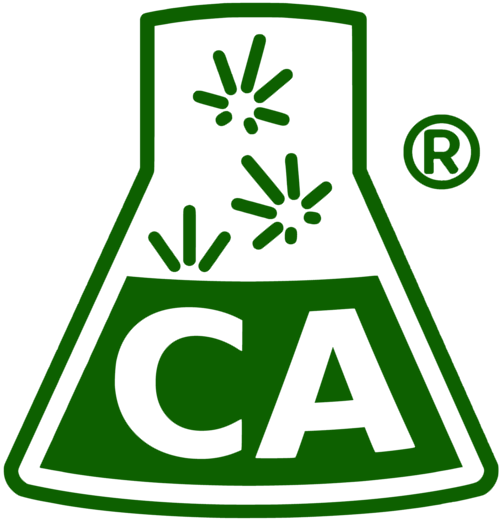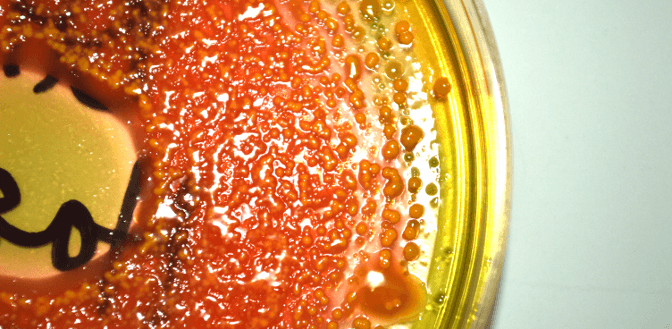A look at microbial testing in I502, as featured in November 2014’s Marijuana Venture Magazine.
It’s a terribly frustrating experience. Heartbreaking, even. You’ve invested a lot of time and money into this incredible plant. You know every plant in your operation by heart. You have put all the right ingredients into them, including your own blood, sweat and tears. Your hard work has yielded something that looks beautiful, smells incredible and tastes delicious. But then your phone buzzes, and it’s the testing laboratory. Your numbers are looking great, but the sample has failed the microbial testing. In a single phone call, your hard work has been devalued by two-thirds in the marketplace. How did this happen? Why? Most importantly, how do you keep it from happening again? Let’s take a closer look at these questions and open the discussion on this troublesome issue.
TESTING AND COST
As Washington’s recreational cannabis consumers enjoy their new freedom, some of the perks legalization brings come with a tremendous cost — one example being laboratory testing. While laboratory tests may seem expensive on a per-item basis, the total cost to the producer/processor is a very small percentage of overhead relative to accounts receivable. The amount of money that goes to lab testing is often less than the amount that goes to label printing. However, the same process that puts the potency values on the package label also has the potential to cause millions in lost revenue for the industry. By categorizing certain crops as “failed,” such testing results devalue some recreational crops in a way that doesn’t happen with medical or black market marijuana.
Part of the legalization initiative Washington voters approved includes quality- assurance testing by a third-party laboratory. The intention is to ensure consumer safety in a variety of ways: the potency values can help moderate use; screening for certain pathogens might prevent food- or cannabis- borne disease; periodic visual inspection helps foster quality products; and moisture limits are intended to help keep the net weight of the product representative of its contents. Certified testing laboratories measure these values and more. A good laboratory can give you the data and tools you need to improve your workflows, create lean processing, and even increase the value of your product in the marketplace.
A sample is taken from each lot or batch of finished product and tested in the lab as a representative of the lot/batch. Crops with test results that fall outside certain limits can be disallowed for retail sale, rendering them only eligible to be processed into concentrates or edibles, which fetches a significantly lower price for the starting material than if it were sold as-is. As you might imagine, this puts growers on edge — they stand to lose a lot of money if they don’t pass the laboratory examination.
HOW TO FAIL THE MICROBIAL TEST
By analyzing the data of about 1,500 test results and conversing with dozens of producers and processors about those results, a pretty distinctive picture is painted: failing the microbial test comes down to post- harvest handling. Let’s look at the test failures from the problem points of sample collection timing, facility quality and trimming.
– Sample collection timing: The microbial test is also tightly linked to the curing process, and probably the easiest way to fail is to collect the sample before it has finished the curing and drying process. Moisture content is high in fresh cannabis, greater than 70 percent by weight, and that moisture needs to be reduced to less than 15 percent in order to pass. This means the buds need to be at least a little crunchy.
– Facility quality: Most crops that fail, do so because of mold. Wet surfaces and pooling water will encourage mold growth, and it is very difficult to maintain a facility without any mold spores lying dormant somewhere. Circulating air, human bodies and equipment can stir up the mold spores and spread them rapidly around a room. That said, when plants are grown in relatively clean rooms, with good air circulation and HEPA or HVAC systems, the amount of mold spores on the living plants is usually well below the limits that would cause them to fail.
Now we get to the real heart of the matter. Cannabis is a survivor. Healthy plants will ward off mold with their passive immune system. We have personally made forensic collection of samples from multiple outdoor and indoor grows and found time and again that samples from live, pre-harvested plants have passing microbial numbers. Although a plant can collect sufficient quantities of microbial elements to cause testing problems, 99 percent of the time it’s not until the plant is cut that it becomes susceptible. Most of the mold contamination and growth happens after the plants have been harvested, while they are being trimmed, dried and packaged.
– Your trimming process: Many molds — such as powdery mildew or botrytis — can attack living plants, but most molds in the world target dead and decaying plant matter. Consider this: When you trim a bud, particularly if you’ve chosen the path of trimming wet, you are creating wounds in living tissue. This is the point where the degrading immune system of the harvested plant becomes truly compromised; it is the window of opportunity for those molds and yeasts seeking access to the plants’ metabolic resources. The trim from cannabis is especially appealing to mold. Trim — a finely chopped blend of stems and leaves — is exactly what molds want to eat. When the trim is fresh and still moist, it’s a perfect breeding ground. In many growers’ experiences, the key to passing the lab tests is as easy as keeping the trim from contaminating the flower. Others have found that drying it faster, while not ideal for preserving the flavor of the cannabis, does help to lower the mold count.
For other growers, it isn’t that easy. Once a mold problem exists, it can be hard to eliminate. Maintaining a clean facility is the best way to beat it, but that’s easier said than done. Preparing flowers for market is a dusty process involving a material that is prone to mold. Particularly in large-scale production/ processing facilities, there’s a lot of activity and a lot of opportunity for mold. It’s not hard to find sources of contamination in these facilities; what is hard is eliminating them all, or at least keeping them from contaminating the product. In our experience, the preferred method for curing cannabis is to hang dry and trim after drying. This provides the least opportunity for mold growth or contamination because the plant isn’t lying on a potentially dirty surface while drying, and because the plant is somewhat protected from infection if it dries while keeping its skin intact. On the other hand, trimming the plant before it dries is often easier, cheaper, and less time consuming, so this is an area where a cost- benefit analysis is appropriate.
Regardless of the curing method, strict attention should be placed on how the product is physically handled. Everything from exposing it to scissors and other trimming blades, to packaging it for storage or sale, ask yourself: “Could this surface be contaminated?” and “Is this an environment for mold to grow?” Remember that moisture is key to mold growth, so harvested plant materials that are still wet are particularly susceptible.
WHAT DO I DO WITH THIS FAILED LOT?
If all else fails, the product can still be used to make extract, a process which often kills most or all of the microbes. It’s certainly not the desired outcome for most cannabis flowers, because they fetch a higher price as they are, but at least it isn’t a complete waste. The recreational marijuana markets are certainly in want of more concentrates. Any agricultural product intended for consumption carries with it an epidemiological risk. Microbial limits tests are an attempt to stave off some of that risk, making them an important part of consumer protection in this industry and in many other Ag and food industries. The current standards imposed on i502 are based loosely on quality metrics used in other herbal and agricultural markets, but may leave something to be desired in their applicability to cannabis and their tolerances as pass/fail criteria. It is an area of serious concern and contention for all producers and laboratories currently operating in this environment. Without a doubt, these methods and limits deserve scrutiny. Further scientific investigation will likely lead to justification of revised limits and methods.
In Washington, if you are a producer or processor with an I-502 license, be sure to partner with your laboratory and work closely and honestly with them. Your laboratory can offer you guidance as you navigate this area, and a good laboratory is a tool for you more than it is a burden. The laboratory you hire should be an advocate for you.

